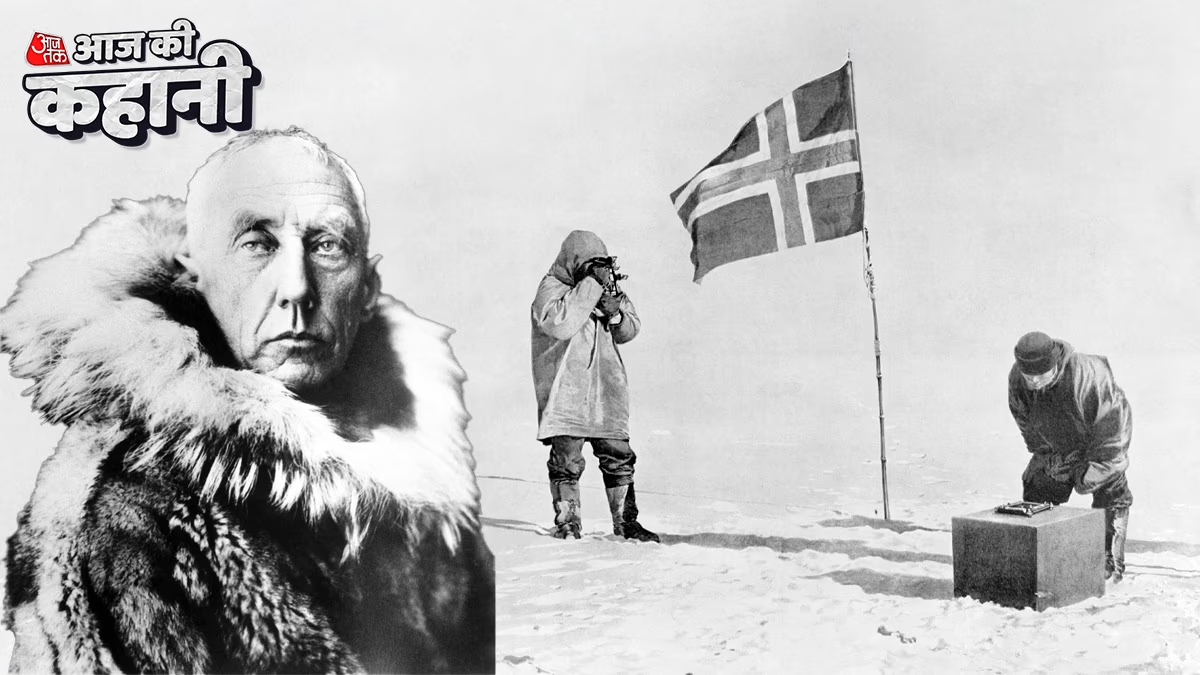On December 14, 1911, Norwegian explorer Roald Amundsen emerged as the first man to reach the South Pole, surpassing his British rival, Robert Falcon Scott. Born in Borge, near Oslo in 1872, Amundsen is celebrated as one of the greatest figures in polar exploration. In 1897, he took part in a Belgian expedition that was the first to brave the harsh Antarctic winters.
In 1903, Amundsen expertly navigated a 47-ton sloop named Gjøa through the Northwest Passage near the Canadian coast, setting a record as the first to complete this hazardous journey. Originally, Amundsen aimed to be the first to reach the North Pole. However, in 1909, he discovered that an American, Robert Peary, had already claimed that honor.
The 1911 Expedition Begins
Having altered his aspirations, Amundsen set sail for Antarctica in June 1910, in a bid to conquer the South Pole. At the same time, British explorer Robert F. Scott was also pursuing the South Pole. Amundsen strategically positioned his ship in the Bay of Whales in early 1911, establishing a base camp 60 miles closer to the Pole than Scott's camp.
The Race to the South Pole
In October, both explorers began their quests towards the Pole. Amundsen relied on sledge dogs while Scott used Siberian motor sledges, ponies, and dogs. On December 14, 1911, Amundsen and his team triumphantly reached the South Pole first and safely returned to their base camp by the end of January.
A Journey of Misfortune
Meanwhile, Scott's journey faced numerous setbacks. His motor sledges failed, their ponies were shot, and all dog teams were sent back. Despite these challenges, Scott and four companions pressed onward on foot. They reached the Pole on January 18, 1912, only to find Amundsen's flag already flying high for over a month.
During their despairing return, they faced brutal weather conditions - two team members perished. Eventually, a fierce storm trapped Scott and the rest of his team just 11 miles away from their camp. Later that year, Scott's frozen body was discovered, marking a tragic end to his expedition.
Amundsen Flew Across the North Pole
Post his historic Antarctic triumph, Amundsen ventured into a successful shipping business. He then set his sights on achieving another milestone – becoming the first to fly over the North Pole. In 1925, he flew within 150 miles of the target in an airplane. By 1926, he successfully flew over the North Pole. Just three days later, American explorer Richard E. Byrd emulated the feat in an airplane.
In 1996, Byrd's flight diary was discovered, suggesting he turned back 150 miles short of his goal because of an oil leak, thus confirming Amundsen's achievement as the first successful North Pole flight. Tragically, in 1928, Amundsen lost his life while trying to rescue a fellow explorer whose plane had crashed into the sea off the coast of Spitsbergen, Norway.
Key Historic Events
December 14, 1687 - The East India Company established a municipal corporation in Madras (India).
December 14, 1983 - General H.M. Ershad declared himself President of Bangladesh.
December 14, 1982 - The massive Green Gate between the British colony of Gibraltar and Spain was reopened after 13 years.




